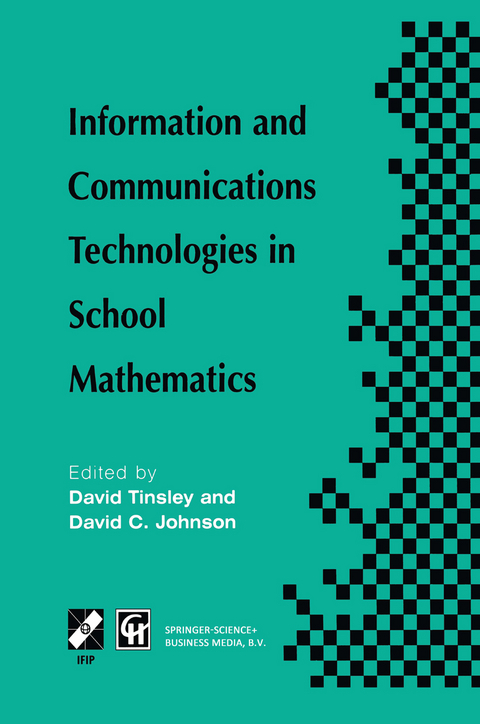
Information and Communications Technologies in School Mathematics
Springer-Verlag New York Inc.
978-1-4757-5473-5 (ISBN)
1 ICT’s and secondary school mathematics—themes, visions and realities.- 2 The impact of informatics on the teaching of mathematics.- 3 Towards an embodied view of the mathematics curriculum in a world of technology.- 4 Social uses of the Internet and the construction of new models for mathematics teaching and learning.- 5 Young students and future teachers as passengers on the Logo engine.- 6 How informatics and discrete thinking return to school.- 7 For the development of mathematics education: from the viewpoint of computer science.- 8 Using the history of mathematics as a source of technology-rich problems.- 9 Towards more natural interfaces.- 10 Spreadsheets: just smart calculators or a new paradigm for thinking about mathematical structures?.- 11 Personal computing technology: use and possibilities.- 12 Computer-supported mathematical learning in the information age: mathematical modelling learned through hypertexts.- 13 A genetic way to conic sections and planetary motion with Cabri-Géomètre.- 14 Construction of meaning and teacher control of learning.- 15 Teacher training as a key issue for the integration of computer technologies.- 16 The computer in mathematics teaching: scenes from the classroom.- 17 The integration of IT and teacher training: supporting teachers in their use of hardware and software tools in the school mathematics classroom.- 18 Teachers and technology: the case of mathematical learning.- 19 Teachers and technology: pre-service training for mathematics.- 20 Moving from fashions to a continuous stream of change: teacher development and IT.- 21 A culture of proving in school mathematics?.- 22 Relationship between the spatial and theoretical in geometry: the role of computer dynamic representations in problem solving.- 23 Computers andapplied constructivism.- 24 Cognitive development and classroom interaction: a theoretical foundation for teaching and learning.- 25 Preparing for the computer age at an early age.- 26 Construction of personal meaning through the use of advanced geometrical software: the case of trigonometry.- 27 Complementing different software environments to mediate the introduction of variable, parameter and unknown.- 28 Authority and responsibility when learning mathematics in a technology-enhanced environment.- 29 Human and social issues in the age of informatics.- 30 Challenge, conflict and culture: issues for secondary school mathematics educators.- 31 Spreadsheets for mathematics in a developing nation.- 32 Educational experiments of distance learning and reorganization of mathematics education.- 33 On-line communities as a vehicle for developing secondary mathematics educators.- Focus Group reports.- IFIP country codes for Focus Group participants.- IFIP and Working Group 3.1.- Conference participants.- Keyword index.
| Reihe/Serie | IFIP International Federation for Information Processing |
|---|---|
| Zusatzinfo | X, 306 p. |
| Verlagsort | New York, NY |
| Sprache | englisch |
| Maße | 152 x 229 mm |
| Themenwelt | Informatik ► Software Entwicklung ► User Interfaces (HCI) |
| Informatik ► Weitere Themen ► Hardware | |
| Mathematik / Informatik ► Mathematik ► Finanz- / Wirtschaftsmathematik | |
| ISBN-10 | 1-4757-5473-6 / 1475754736 |
| ISBN-13 | 978-1-4757-5473-5 / 9781475754735 |
| Zustand | Neuware |
| Haben Sie eine Frage zum Produkt? |
aus dem Bereich


